
Printing on fabric with plants (eco-printing) is the process of placing plants on white fabric and processing it in such a way that the different elements of nature form a special and naturally magical image on the fabric. Part of the charm of this process is that you can never really know the outcome and the skill of printing with plants comes with experience.
I myself have been dyeing with plants for several years and the results have been different and interesting. Last year I started to also try printing with plants on different fabrics. I have to admit that the first attempts didn’t turn out very well.
Here is one example how printing with plants can look like:
From my garden I picked some leaves of blackcurrant, birch, hackberry and hazel and also some dill flowers. My personal favourites for printing are onion skins, rusty chains and screws, and the like. I also took some blueberries and blackcurrants from the freezer to add colour. This time I thought I’d also use black tea grounds. For staining, I used alum ice.
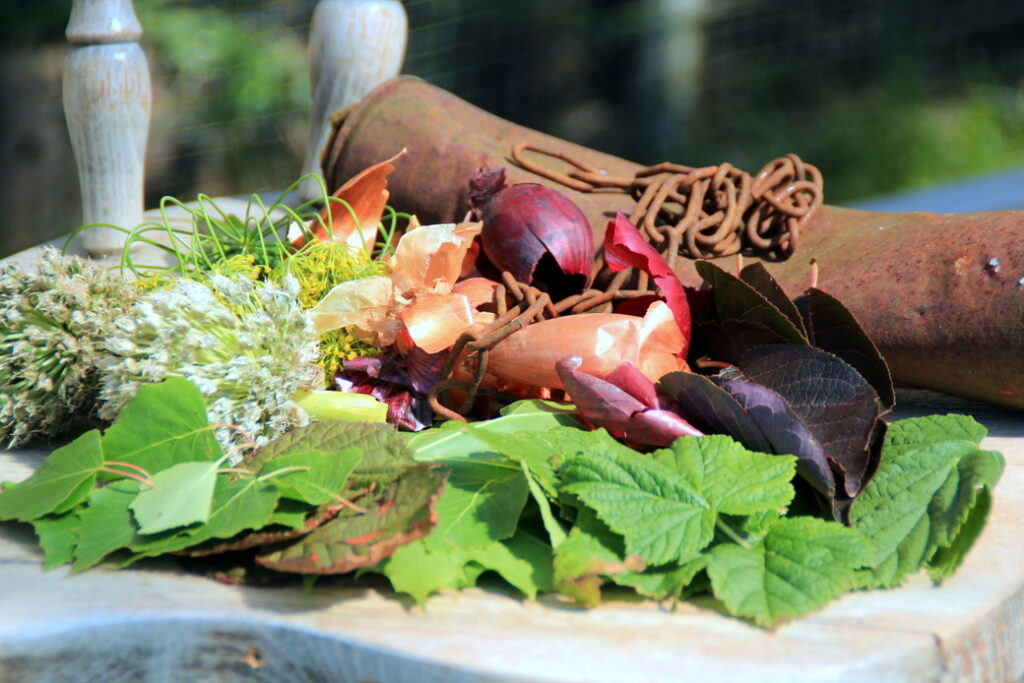
First, I made the cotton fabric thoroughly wet,

then I put different plants on the fabric,
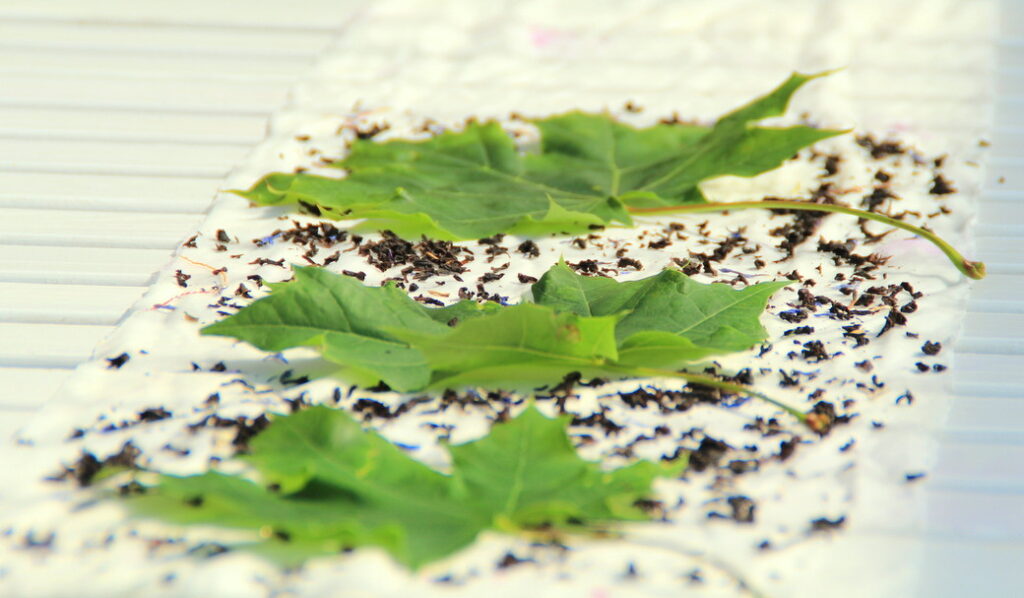
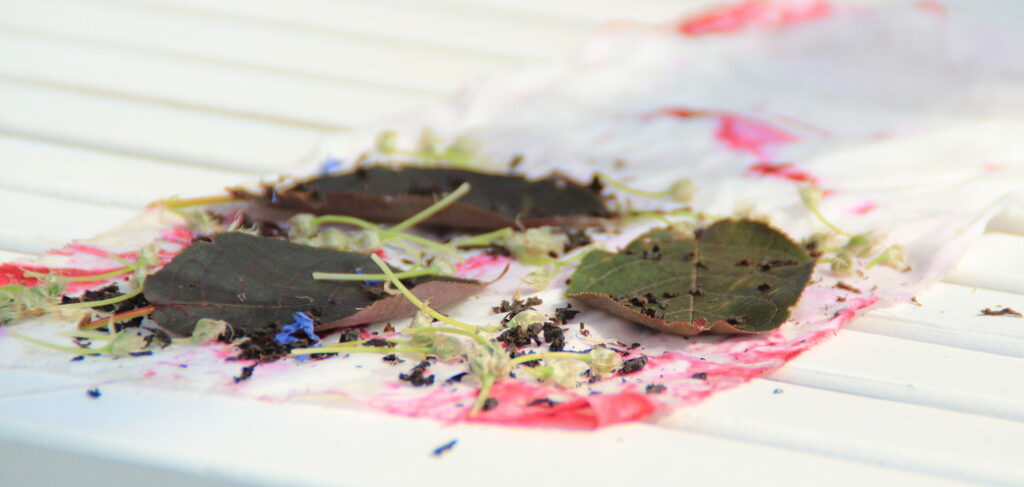
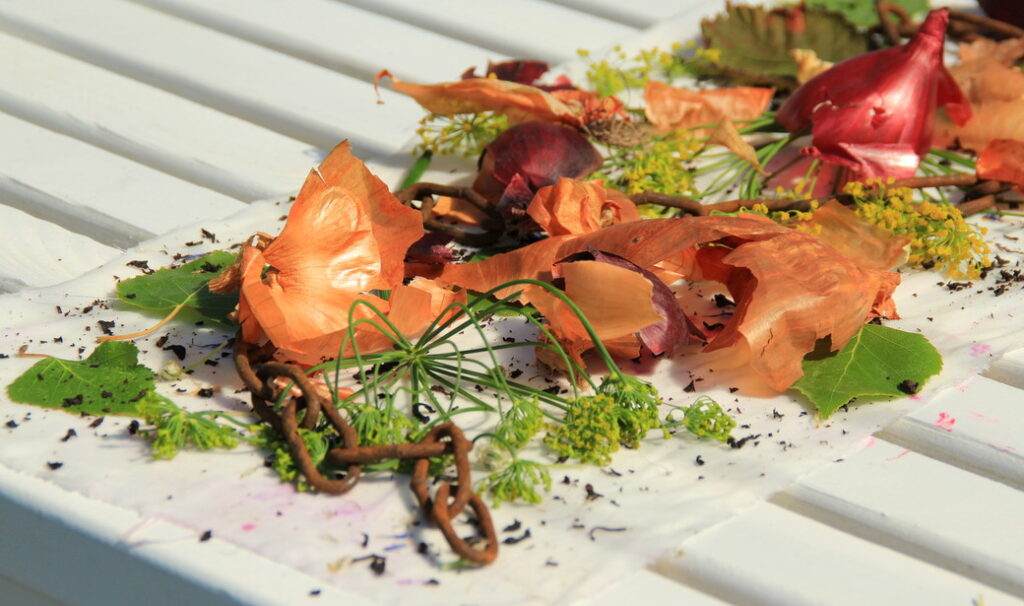
then I wrapped the fabric around a tree branch and tied it very tightly in a roll.
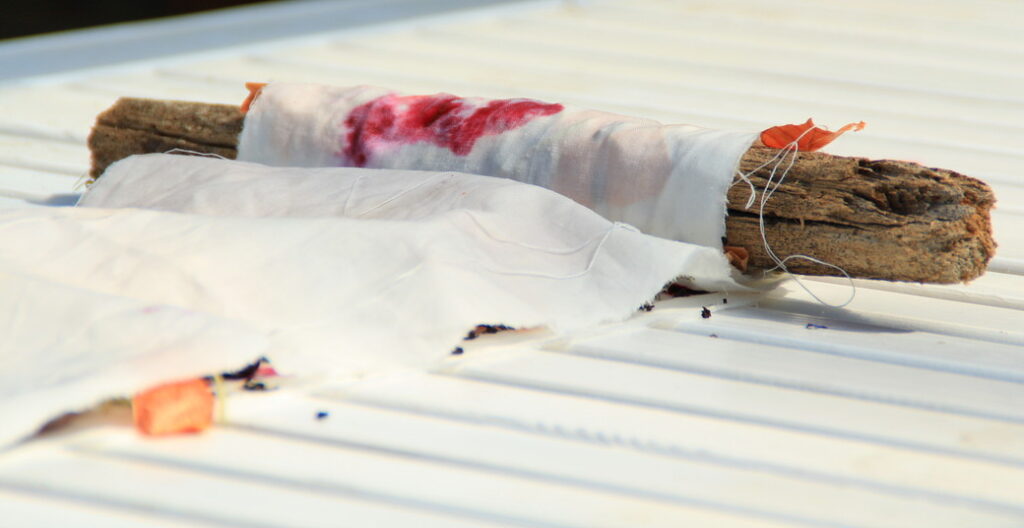
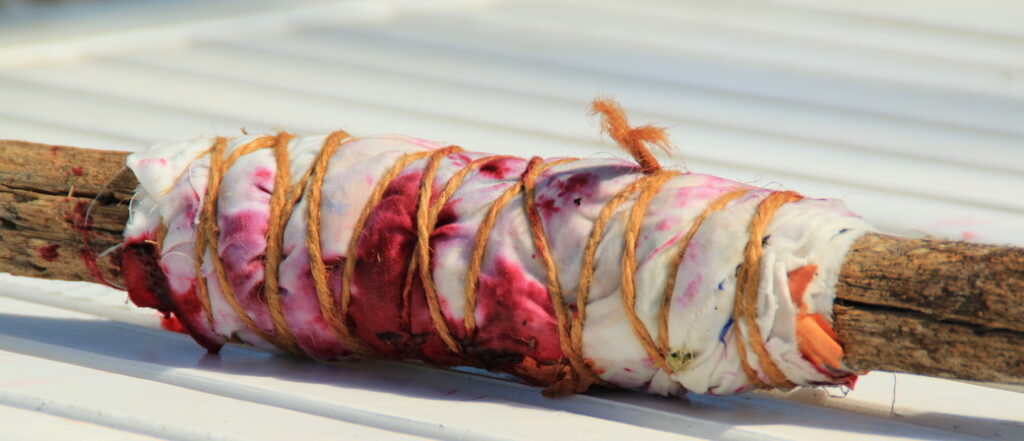
In addition to the tree branches, I also used a rusty bottle that I found in a pile of metal waste. It’s worth experimenting with different materials to get different exciting results.

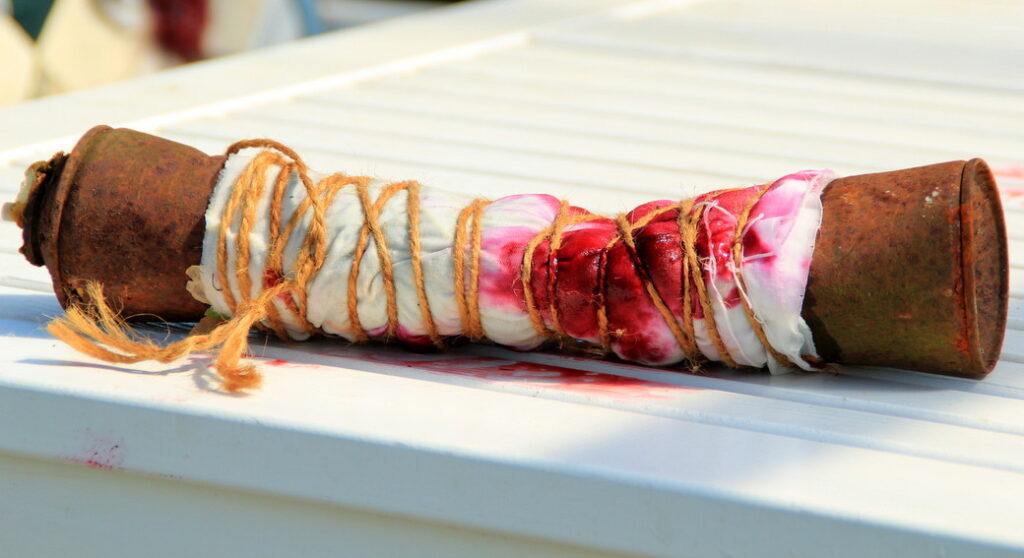
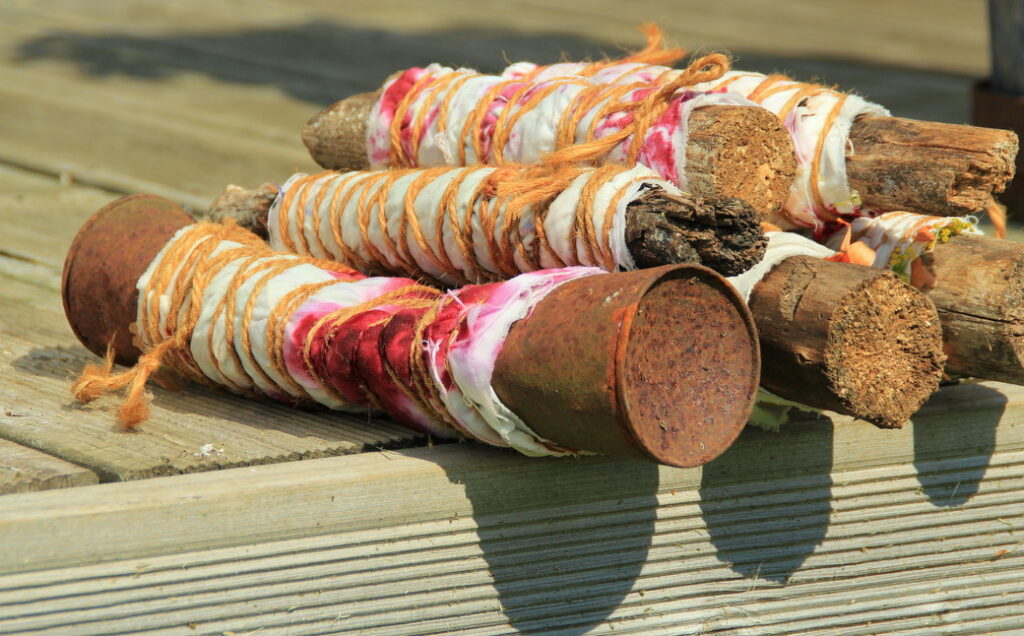
I then put the rolls in a pot of water and placed some stones on top of them so that the fabric would be properly covered with water, and after that I just let the water boil. In the meantime, I also added some alum ice.
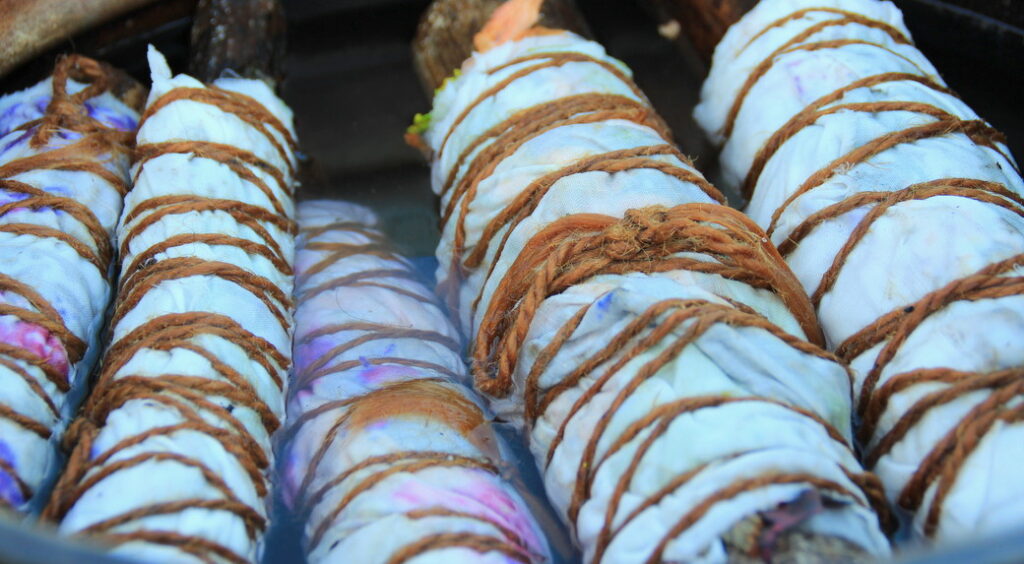
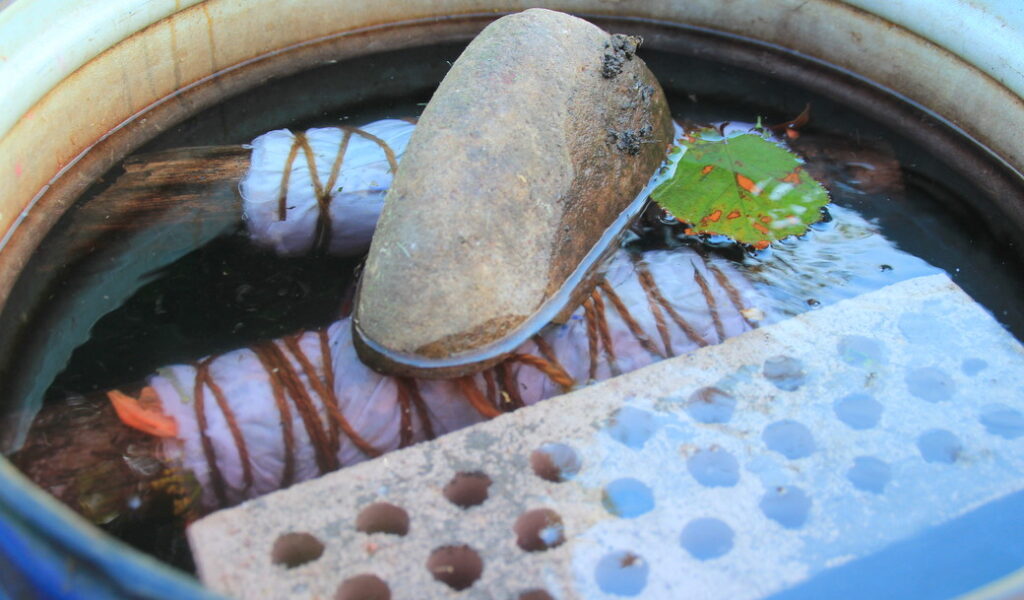
I’ve read different sources on the subject, and some of them claimed that you should let the fabric stay in water for as long as three days. But it’s a matter of your feeling and trial and error, I often open the rolls the same evening.